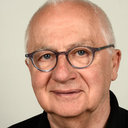How Finsen's light cured lupus vulgaris.
Cuvinte cheie
Abstract
In 1903, Niels Ryberg Finsen was awarded the Nobel Prize for his invention of light therapy for skin tuberculosis (lupus vulgaris). The mechanism of action has not been shown; thus, we wanted to elucidate the mechanism of Finsen's light therapy. We measured radiation that could be transmitted through his lens systems and absorption of the stain solution filters in the lamps, and related the obtained results to the possible biological effects on Mycobacterium tuberculosis. Judged from transmission characteristics all tested lens systems were glass lenses (absorbing wavelength < 340 nm). The tested filters likewise absorbed wavelengths < 340 nm. The methylene blue solution used to absorb heat, blocked out wavelengths below 340 nm and between 550 and 700 nm. Furthermore, fluorescence of M. tuberculosis indicated the presence of porphyrins and HPLC analysis of sonicated M. marinum showed that coproporphyrin III was present, which highly justified that porphyrins were present in M. tuberculosis. Production of singlet oxygen through radiation of porphyrins with light of e.g. 400 nm seems to be a most plausible explanation why Finsen's therapy worked in spite of the lack of shortwave ultraviolet radiation, which Finsen believed was the most effective radiation for treating skin tuberculosis.


